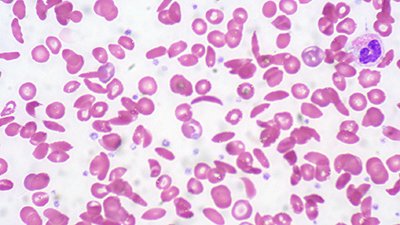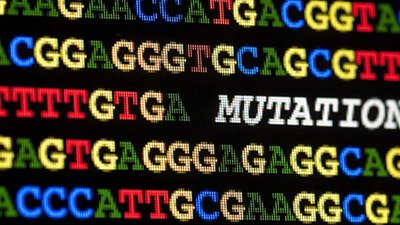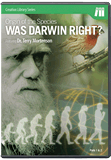Molecular Time-Travel
“Molecular machine’s evolutionary trajectory”1 is an imaginary marvel.
News Source
- University of Chicago: “Scientists use ‘molecular time travel’ to recreate evolution of complexity”
Many cellular functions are performed by groups of specialized proteins arranged to work together like a machine. According to the University of Chicago’s news service, “How the minute steps of evolution produced these constructions has long puzzled scientists, and provided a favorite target for creationists.”
“Evidence of the mechanisms by which these assemblies evolved is lacking,” according to a paper to be published in the January 18 issue of Nature. Dr. Joe Thornton and colleagues write, “Here we use ancestral gene reconstruction and manipulative genetic experiments to determine how the complexity of an essential molecular machine . . . increased hundreds of millions of years ago.”2
Thornton proposes instead that the complex form evolved from a highly complex ancestral molecule.
Thornton’s team examined the components of a ring-shaped molecular complex (part of a proton pump) that adjusts intracellular acidity. The version of the ring found in animal cells consists of a Vma16 subunit and five Vma3 subunits. In fungi, the pump ring consists of a Vma16 subunit, four Vma3 subunits, and one Vma11 subunit. Since the fungal version contains three different proteins, its ring is by definition “more complex” and must, in one evolutionary view, have evolved from the simpler two-protein form.
Thornton proposes instead that the complex form evolved from a highly complex ancestral molecule. “Mutations that compromise existing functions are far more frequent than those that generate new ones.”3 Therefore, the authors conclude, instead of trying to figure out how lots of “mistakes” can add up to new, complex, functional information, it makes more sense to start with a complex modular biological system and picture it degenerating to the present form. Believing his model proves the past, Thornton says, “What’s surprising to me is the idea that greater complexity doesn’t require acquisition of new functions. It can come from partial degeneration of the ancestor.”4
So, what is this “molecular time-travel approach” Thornton’s group has pioneered? They analyzed the genes for the protein ring in 139 modern specimens, “tracing evolution backwards through time along the Tree of Life to identify the most likely ancestral sequences.” Having thus examined the structural forms that work, by “cleverly engineering a set of ancestral proteins fused . . . in specific orientations,” they created a model for a modular mega-molecule. They assumed this complex ancestral molecule existed and was actually ancestral to present forms of the pump ring.
“Our strategy was to use ‘molecular time travel’ to reconstruct and experimentally characterize all the proteins in this molecular machine just before and after it increased in complexity,” Thornton said. “By reconstructing the machine’s components as they existed in the deep past, we were able to establish exactly how each protein’s function changed over time and identify the specific genetic mutations that caused the machine to become more elaborate.”
The team assumed multiple copies of the same subunit evolved by gene duplication. Then they modeled scenarios in which certain mutations made the subunits less versatile. They subtracted subunits until only functional combinations remained. They synthesized the DNA gene sequences matching hypothetical ancestral proteins and put the synthetic genes into defective mutant yeast. Since the synthetic ancestral gene rescued the yeast, Thornton’s team believes it is the incarnation of the protein’s ancestral gene.
Thornton believes this “discovery” is the first of many that will invalidate the anti-evolutionary argument of “irreducible complexity.”
Thornton believes this “discovery” is the first of many that will invalidate the anti-evolutionary argument of “irreducible complexity.”5 He says, “These really aren’t like precision-engineered machines at all. They’re groups of molecules that happen to stick to each other, cobbled together during evolution by tinkering, degradation, and good luck, and preserved because they helped our ancestors to survive.” He adds, “Complexity can appear through a very simple stepwise process—there is no supernatural process required to create them.”6
Thornton assumes similar proteins are proof of common ancestry, but a wise common Designer (like God) can certainly use the same sort of molecule in many places without needing complex forms to evolve from the simple.
Has Thornton’s team actually discovered anything? They have designed models by varying a protein’s structure. And because their synthetic “ancestor” functions, they claim it existed as an ancestral form billions of years in the untestable past. They claim the complex ancestral form they designed must have been the real ancestor because they’re able to weave a story in which it works. The world is full of fictional books and history books. History books describe what was; fictional books describe what could have been. Being able to tell a plausible story doesn’t prove it happened.
Furthermore, while proclaiming victory over the creationist challenge of “irreducible complexity” by starting with a complex mega-molecule and chopping off parts, Thornton’s team never even suggests where the original complex ancestral molecule or the genetic information to build it came from.
Finally, the University of Chicago news service implies a distinction between “scientists” and “creationists.” Yet creation scientists and evolutionary scientists both use the same scientific method and study the same observable facts. The “scientists” on Thornton’s team however are making untestable claims about the past as assumed fact. Theirs is a clear position of faith in that which they cannot possibly test. And unlike “creationists,” they have no eyewitness account to verify or refute their position.
The Bible gives God’s eyewitness account of Creation. The alternative scenarios proposed by evolutionists are missing not only the actual source of the original information but also any way to test and validate their claims. We can trust the Bible’s history. And we can recognize a biochemical yarn when we hear it.
For more information about irreducible complexity and molecular machines see The End of Irreducible Complexity?.
Further Reading
For More Information: Get Answers
Remember, if you see a news story that might merit some attention, let us know about it! (Note: if the story originates from the Associated Press, FOX News, MSNBC, the New York Times, or another major national media outlet, we will most likely have already heard about it.) And thanks to all of our readers who have submitted great news tips to us. If you didn’t catch all the latest News to Know, why not take a look to see what you’ve missed?
(Please note that links will take you directly to the source. Answers in Genesis is not responsible for content on the websites to which we refer. For more information, please see our Privacy Policy.)
Footnotes
- Finnigan, Gregory C. et al. Evolution of increased complexity in a molecular machine, appearing in the January 18, 2012, issue of Nature. DOI: 10.1038/nature10724
- Finnigan, Gregory C. et al. Evolution of increased complexity in a molecular machine, appearing in the January 18, 2012, issue of Nature. DOI: 10.1038/nature10724
- Finnigan, Gregory C. et al. Evolution of increased complexity in a molecular machine, appearing in the January 18, 2012, issue of Nature. DOI: 10.1038/nature10724
- blogs.nature.com/news/2012/01/resurrecting-extinct-proteins-shows-how-a-machine-evolves.html
- The End of Irreducible Complexity?
- blogs.nature.com/news/2012/01/resurrecting-extinct-proteins-shows-how-a-machine-evolves.html
Recommended Resources

Answers in Genesis is an apologetics ministry, dedicated to helping Christians defend their faith and proclaim the good news of Jesus Christ.
- Customer Service 800.778.3390
- © 2024 Answers in Genesis







